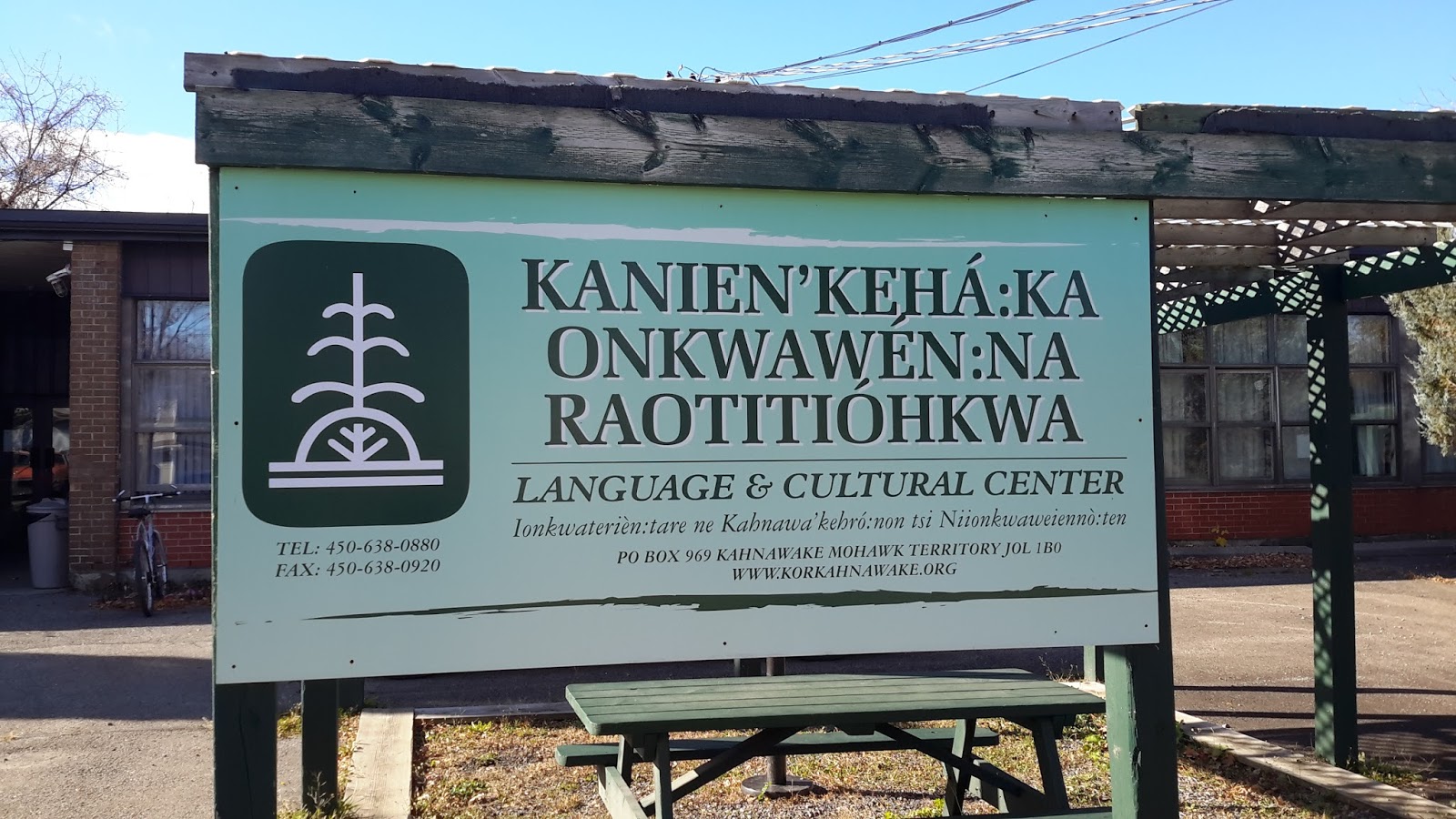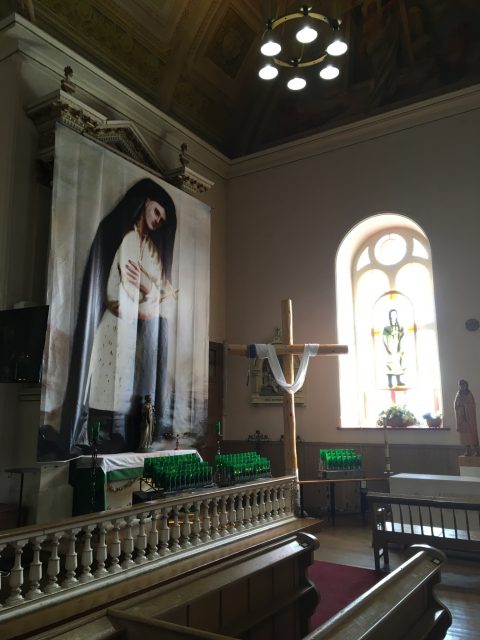History Field Trip & Workshop in Kahnawake
September 13th, 2017The students of the learning communities class Counting the Cost: Social Justice in Canada? will have the opportunity to visit the community of Kahnawake – including guided visits to the cultural centre, the village itself, and a longhouse. This field trip has been designed and organized by Kahnawake tourism officer Wakenhnhiiohstha Montour.
Project Update
Students in the Learning Community Counting the Cost: Social Justice in Canada? had the opportunity to visit Kahnawake in September. The class met in front of Dawson to begin the day. We spoke about the upcoming trip and talked about the ways we wanted to approach the visit – as guests, as students, as Canadian citizens, as settlers. We asked students to be observant even on the bus ride to Kahnawake – that geography and placement matter.
Upon our arrival in Kahnawake, we were directed to the St. Francis Xavier Mission where the students were invited to listen to a presentation about the role of the church, the mission and St. Kateri Tekakwitha. Students were given time to walk around the church and through the museum attached to the mission. We had an interesting discussion with several students about the cultural blending that they observed in the church – that a female Mohawk was given such a prestigious position in a Roman Catholic church.
We were met outside the church by our tour guide, Davis Rice. He spent a good hour telling his own story of growing up in Kahnawake while we sat alongside the St. Lawrence Seaway. Students were really moved by his story telling and, in reflection, identified this as the most rewarding part of the experience. From there, we had a tour of the village. Students noticed quickly that there were no street names and that people seemed to know and greet each other as we walked around. We ended the tour at Kanien’kehá:ka Onkwawén:na Raotitióhkwa Language and Cultural Center where the students toured the permanent exhibit and had a chance to have more time listening to Davis.
We returned to Dawson and had multiple class discussions and assignments related to the trip in the coming week.
A student reflection piece:
Our field trip to Kahnawake was truly eye-opening for me, as it completely challenged what I had been taught about reserves. First of all, the proximity of it really struck me, as I was, until very recently, under the impression that reserves were far away from Montreal, and that they were as unaware of our reality as we were of theirs. Secondly, Kahnawake looked like any small town village that I had ever visited, and the people all seemed to know and appreciate each other, greeting each other on the street. Although I wasn’t expecting longhouses, the modernity of the installations were never something that was explained to us (or at least to me) growing up. At my high school, whenever we would touch upon the subject of the modern realities of Indigenous people, we were shown images of crumbling houses and drug addicts hanging out on decrepit sidewalks. This was just another example of how inaccurate the education system is in regards to Indigenous people; how, in 2017, our textbooks are still so inherently racist and ethnocentric. Overall, I really enjoyed hearing the man talk about his childhood and his perception on certain issues faced by Indigenous people. The environmental aspect of it resonated with me…This unique opportunity of getting a guided tour of the reserve is something that I greatly appreciated, and I would definitely suggest that you go on this field trip again if you teach this class next semester.




